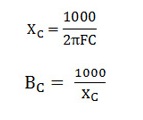The three types of neural networks are feedforward neural networks (FNNs), recurrent neural networks (RNNs), and convolutional neural networks (CNNs). Feedforward neural networks are the simplest type, where connections between nodes do not form cycles. Recurrent neural networks are designed to handle sequential data by maintaining hidden states that capture information from previous inputs. Convolutional neural networks are specialized for processing structured grid data like images and are known for their ability to automatically detect features.
The three different types of neural networks include feedforward neural networks, recurrent neural networks, and convolutional neural networks. Each type has distinct architectures and is used for different applications. Feedforward neural networks are typically used for general classification and regression tasks. Recurrent neural networks are used for tasks involving sequences, such as time series forecasting and natural language processing. Convolutional neural networks are used for image and video recognition.
A 3-layer neural network consists of an input layer, a hidden layer, and an output layer. The input layer receives the input data, the hidden layer processes the input through weighted connections, and the output layer produces the final prediction or classification. Each layer is made up of neurons, and the connections between them are characterized by weights that are adjusted during the training process to minimize error.
The three components of a neural network are the input layer, the hidden layers, and the output layer. The input layer receives raw data and passes it to the hidden layers. The hidden layers perform computations and feature extraction through weighted connections and activation functions. The output layer takes the processed data from the hidden layers and generates the final output.
The most used type of neural network is the convolutional neural network (CNN). CNNs are widely applied in the field of computer vision for tasks such as image classification, object detection, and facial recognition due to their effectiveness in automatically learning spatial hierarchies of features from input images.
